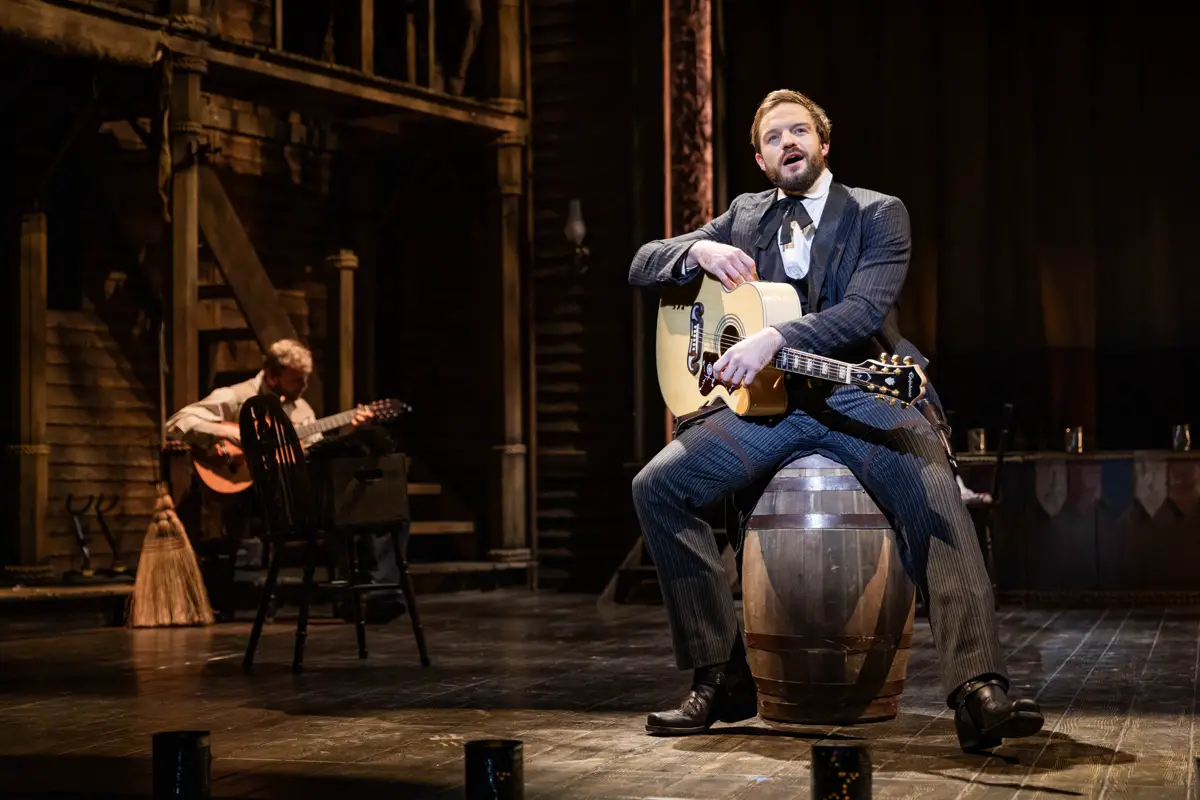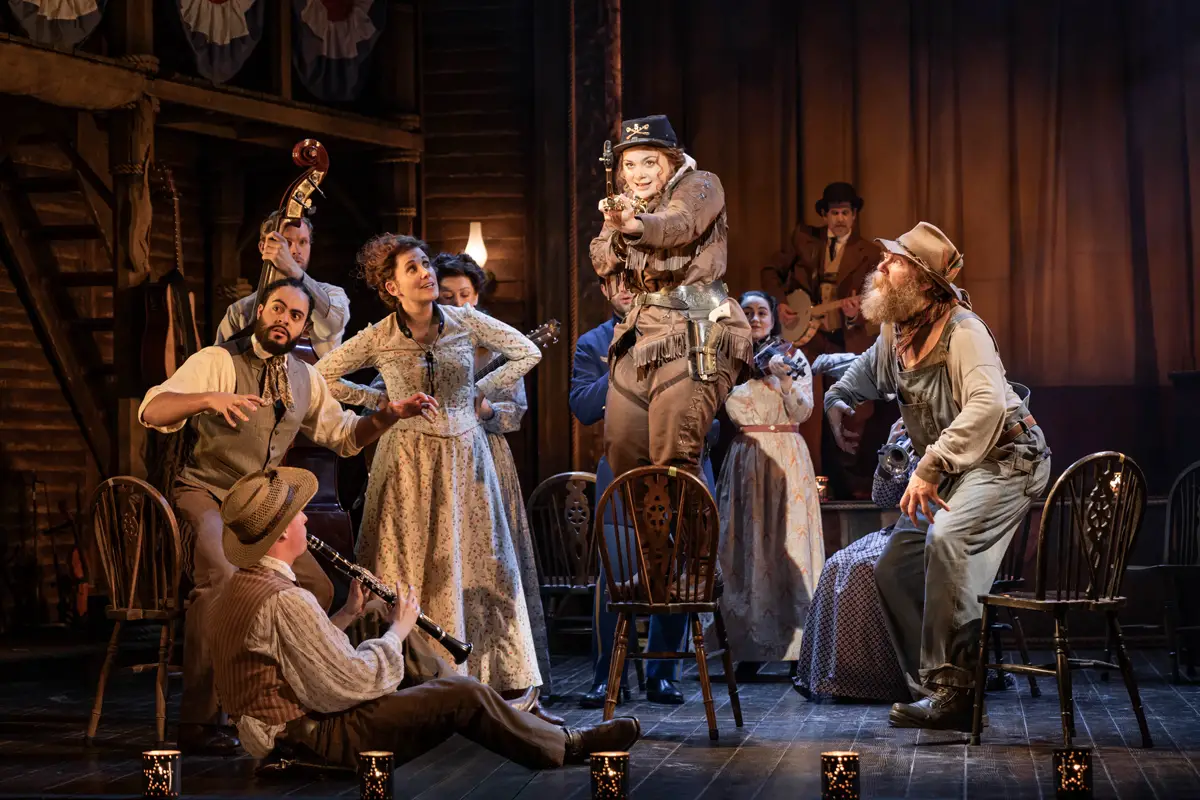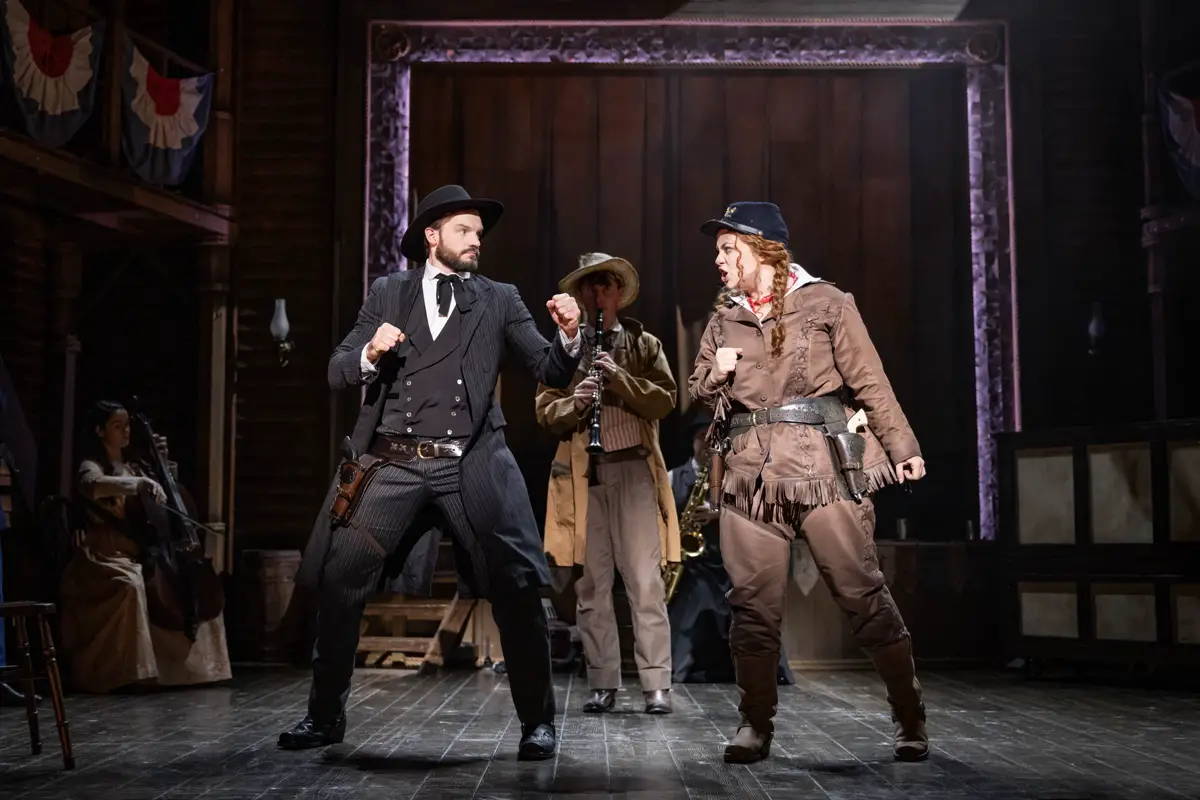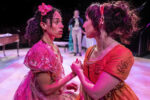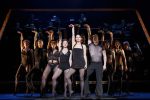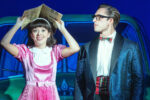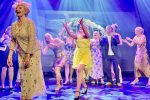Calamity Jane – Review – Hull New Theatre
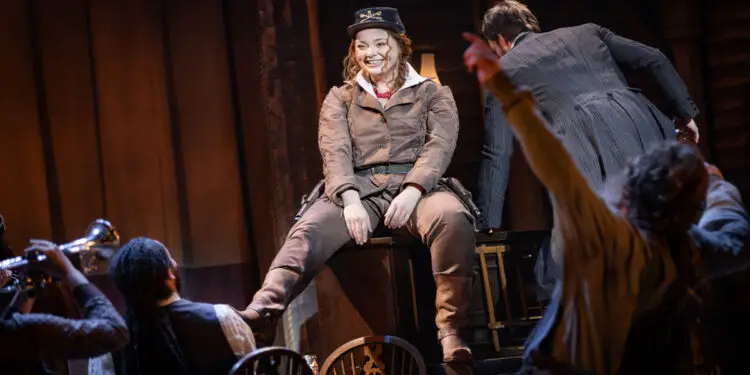
By Elizabeth Stanforth-Sharpe, July 2025
1960’s television was black and white, had only two channels, and always included a musical on Sunday afternoons. Warner Brothers’ 1953 version of Calamity Jane was one that was scheduled regularly. The ‘technicolor’ (sic) was lost to us, but the hard-riding, gun-slinging Doris Day had all the family glued to the set in the corner. There wasn’t a child in the land that didn’t own a cowboy hat, feather headdress, cap gun or bow and arrow, and boys learned quickly how to tie their sisters to table legs. Bonanza, Little House On The Prairie and The Lone Ranger all convinced us that our knowledge of that far away place named ‘Wild West’ was complete. If all that wasn’t enough, when the stage play was written in 1961, Am Dram societies across the nation donned fringed jackets and studded boots to get in on the action.
In today’s world the reference points are strikingly different. Gun crimes are a major global problem and not a subject for entertainment. We now have a richer comprehension of the wisdom, languages, histories and cultures of North American Indigenous Peoples. The ‘frontier myths’ – created by writers, painters, and later filmmakers – that idealized cowboys, gold miners and ranchers, and promoted the communities they formed as new worlds where the settlers could reinvent themselves, have been de-bunked. The significant lesbian symbolism in the film of Calamity Jane couldn’t be openly acknowledged until 2006, 53 years after its original release, and ‘Secret Love’ was dubbed ‘the first gay anthem’ in 2011.
I was intrigued to see how Jamie Wilson and the rest of the Production team have re-styled the stage version of Calamity Jane for a contemporary era, whilst also keeping that sense of blanket-wrapped, warm wistfulness that the original film holds. It is a balance that they have achieved remarkably well.
Danny Gilmartin (Luke Wilson) is still attacked and injured, but gone is any racial implication, and Wild Bill Hickok changes his costume forfeit to a more suitable – and amusing – Queen Victoria outfit. Gun use is minimal, the barrel is more likely to shoot out an amusing flag than a bullet, and saxophones are pointed instead of rifles. The possibilities for Jane’s romantic happy ending are expanded – who will she ultimately choose? Danny, Katie, or Bill?
“Understated and nuanced”
Deadwood residents are now an equal balance of genders, negating the film’s running joke of theatre proprietor and saloon owner Henry Miller (Peter Peverley) addressing audiences with, “Gentlemen, and er gentlemen”. Two new songs are also slotted seamlessly into the line-up. ‘Men’ allows Jane to get her own back for the misogynistic teasing she received in the film script, and ‘Careless With The Truth’, sung in the most part by Bill (Vinny Coyle). suggests that she may tend to stretch veracity in the stories she tells.
Theo Diedrick starts the show in front of the curtain by leading the audience in singing ‘Black Hills of Dakota’ to a banjo accompaniment. It is a gentle, old-fashioned, almost music hall beginning that at once reinforces a bygone age in the sleepy town of Deadwood.
The curtains open onto a set designed by Matthew Wright that transports the audience instantly to a sepia background that places time and history in context. This is the era of those photographs of distant ancestors who stare unsmilingly out from the family albums, their stories woven and passed down, but beyond remembrance. Behind the main stage, a second proscenium arch standing for the town’s theatre draws us deeper into a world that is bathed in gentle nostalgia. Costumes and dressings in soft, muted, dusty shades transform the space from town square to theatre, city dressing room, ballroom, shack and church in elegant, beautifully understated and nuanced style.
The first hints of Diedrick’s Deadwood may have been slow and restrained, but when the energy of this show begins to shift there is no stopping it. The time passes in a whirlwind of instruments and dancing that is exhausting to watch. The stamina of this magnificent ensemble is mesmerizing.
“Complexity”
A piano becomes a stagecoach with wagon wheels, Calamity gallops along on a couple of chairs posing as horses, and pipe smoke gives us the illusion of a train. Everything is conjured before us in the way that stories have been told since time began. No fancy screens or special effects; just good old-fashioned imaginative play that is packed with nostalgia and childhood memories.
Carrie Hope Fletcher brings a lovely layering to her role as Jane. Jane isn’t an ingénue, or the fluffy air-headed romantic of other musicals of a similar date. She has comedy, a lifestyle that isn’t typical of women of that period, but she also has the ability to form amazing female friendships and still retain a core of femininity that is yet to plumbed. Forget Doris Day. This is Hope Fletcher putting her own stamp on the songs and the text. She isn’t afraid to explore the complexity of the character, and it shows.
The songs take on new meaning in her powerful vocal range, and the storytelling thread running through the whole piece is much stronger and more meaningful. Full kudos must also be given to Hope Fletcher in that this is the first production in which she has had to dance. She had not danced since she was ten years old but began choreography lessons in preparation for Calamity Jane just after giving birth to her first child, and she carries it off brilliantly.
The use of an ensemble that is made up of actor-musicians – including Hope Fletcher on the coconuts – is perfect for this setting, giving a hoe-down vibe, but also having enough substance to carry the weightier numbers.
“Entertaining”
There are only two moments that slightly jar with me, and they are so minor that it seems churlish to even mention them. The first – there are 17 actor-musicians on stage for most of the action, and the only point where this feels in any way obtrusive is when the chairs are arranged to watch the theatre acts; the row of seated cast with their backs to the audience form a greyish punctuation mark between us and what is happening on the inner stage. It doesn’t block our view, and I can fully understand the practicalities of why it has been done, but it is a visual smudge that once seen can’t be unseen. The second – at the ball, Jane’s dress doesn’t read quite right; it could do to be a smidgen of a shade deeper in colour whilst not interrupting the register of the overall palette. But I am being incredibly picky.
The programmes that accompany shows often don’t get mentioned yet are things of beauty in themselves. The Calamity Jane programme is ENORMOUS. It’s too ungainly to digest in the interval and it doesn’t quite fit under the seat – perhaps a deliberate ploy to encourage purchases of a ‘Whip Crackin’ tote bag to put it in – but it is packed with well written information about the development of the show, interviews with the cast, and articles about the real historical figures of Martha Jane Canary, Captain Egan, and James Butler Hickok, who inspired the principal characters of the show.
Whether you have vague memories of watching the original film or are coming to Calamity Jane with no knowledge of the story, matters not one jot. There are sub-agendas and parables to be drawn from it, if you are of mind to, but it’s first, and foremost, a wonderful, funny, entertaining show that is suitable for all ages and that will send you out singing and with a smile on your face.
‘Calamity Jane’ is at Hull New Theatre until 26th July
